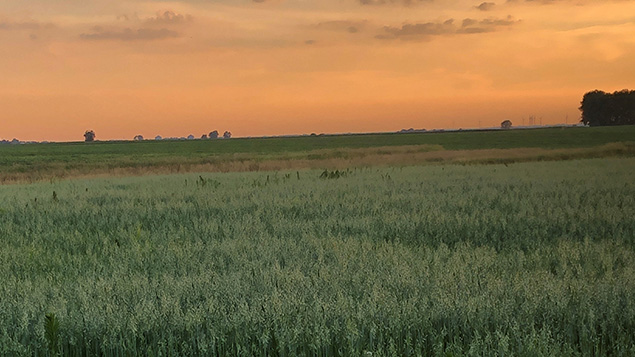Don’t Forget About Retirement Planning

Many producers view their land as their retirement plan. Too often, while a producer retires a multi-millionaire, they cannot engage in the kind of retirement lifestyle they desire because all of their wealth is tied-up in non-liquid assets. The land will generally produce a good income stream, but that income stream may not be enough.
For example, assume the producer owns 500 acres of land outright and receives cash rent income of $300 per acre, net of real estate taxes, maintenance, etc. This generates $150,000 of income a year, before income taxes or a return of 2.5% based on a current land value of $12,000. Assume after income taxes, this leaves the farmer approximately $130,000 of spendable income for the year. Is it enough? It depends on lifestyle, but for most they were generating and living on a greater than 2.5% return by operating that land prior to retirement. What happens when more money is needed – for instance a new vehicle, a vacation home, or even long-term care costs? Mortgage or sale are not words that most farmers like to hear once they have settled into retirement.
The small business owners (farmers and nonfarmers) that are most successful in managing through retirement and living the lifestyle they desire have diversified into retirement accounts to allow for liquidity. These plans also offer excellent tax advantages as contributions are tax deductible. Most are only aware of the traditional and Roth IRA, but there are other options.
• Traditional/Roth IRA – allows for contribution of $6,000 per individual plus an extra $1,000 if over age 50. There are income limits that apply to the ability to make and deduct contributions. Traditional plan contributions are deductible when made, taxable when distributed. Roth contributions are not deductible but grow tax free and are not taxed upon distribution
• SIMPLE IRA – This plan is as it says…simple. Essentially a 401(k) like plan for small business, it allows the owner of the business and employees to contribute $14,000 of their wages, or in the case of the owner their self-employment income, plus an extra $3,000 if over age 50. The employer is required to make a matching contribution of either 2% or 3% of the employee’s pay depending on the option selected. But keep in mind, this match also applies to the farmer based on their Schedule F income, which can add a lot to the farmers account in a good year.
• SEP IRA – A more powerful option is a SEP IRA, but it can also be more costly if you have employees. A SEP is limited to 25% of compensation (self-employment income in the case of a producer) or $61,000. The upside to this plan comes in a year of high farm income – assume $305,000 of Schedule F income – where the contribution limit would be met. The producer would receive a tax deduction for the amount of the contribution. However, if the farmer has other W-2 employees, he must also contribute 25% of their wages if he wants to maximize his contribution. While a valuable employee benefit, it can also become expensive quickly.
Retirement planning is often overlooked but is important to the producer’s overall financial plan. As we wind up 2022 and harvest yields come in, consider whether funding a contribution this year fits into your overall strategy.
Kelly Jackson Hardy is a certified public accountant and business advisor specializing in income taxation, accounting services, and succession planning for farmers, privately-held elevators and supply dealers, and cooperatives. Kelly is a principal with CliftonLarsonAllen in Princeton, Illinois, as well as a regular speaker at tax and estate planning seminars. Kelly was raised on a hog, row crop and cattle farm in central Illinois and has been involved in the ag industry her entire life. Kelly, her husband, and two sons are active in 4-H and operate a small feeder calf operation and pumpkin business.

Paul, i am wondering if you have any new updates on the emergency relief program. i have a couple farmers telling me that the usda is now saying equipment sales can be used in the calculation no matter what the percentage is without the equipment sales. i can not find anything to support this. wondering your thoughts.